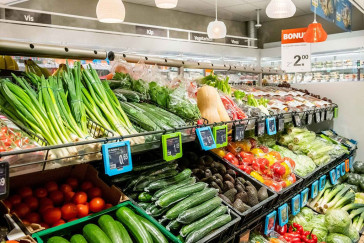This study contributes to the employability skills debate by investigating how students’ self-perceived 21st century skills relate to the self-perceived fit between their higher education curriculum and their future labor market for a sustainable entry to this labor market. Survey data from 4670 fourth-year students over a period of four years were analyzed. Furthermore, out of this group, 83 students were monitored longitudinally over their full educational student careers. Results showed a positive relationship between students’ self-perceived 21st century skills and their self-perceived “education-future labor market fit”. Among more recent cohorts, a significant improvement in their self-perceived 21st century skills was found. Overall, this study indicated that in order to deliver “employable” graduates, students need to be thoroughly trained in 21st century skills, and their development should be retained and expanded. This is one of the few studies that uses a vast amount of both cross-sectional and longitudinal data on skills and labor market perspectives among new graduates.
DOCUMENT

High-tech horticulture production methods (such as vertical farming, hydroponics and other related technology possibilities), combined with evolving market side possibilities (consumer’s willingness to pay for variety, food safety and security), are opening new ways to create and deliver value. In this paper we present four emerging business models and attempt to understand the conditions under which each business model is able to create positive market value and sustained business advantage. The first of these four models is the case of a vertically integrated production to retail operation. The second model is the case of a production model with assured retail/distribution side commitment. The third model deals with a marketing/branding driven production model with differentiated market positioning. Finally, the forth is a production model with direct delivery to the end-consumer based upon the leveraging of wide spread digital technology in the consumer market. To demonstrate these four business models, we analyze practical case studies and analyze their market approach and impact. Using this analysis, we create a framework that enables entrepreneurs and businesses to adopt a business model that matches their capabilities with market opportunities.
DOCUMENT

Thank you for sharing this story! However, please do so in a way that respects the copyright of this text. If you want to share or reproduce this full text, please ask permission from Innovation Origins (partners@innovationorigins.com) or become a partner of ours! You are of course free to quote this story with source citation. Would you like to share this article in another way? Then use this link to the article: https://innovationorigins.com/en/silicon-sampling-ai-powered-personas-offer-new-insights-for-market-research-but-have-limitations/ n the rapidly evolving field of marketing and communication, staying ahead means embracing technological innovations. The latest breakthrough, silicon sampling, leverages AI to revolutionize market research by creating synthetic personas that mimic human responses. This method, which utilizes large language models (LLMs) like GPT-4o, offers a cost-efficient and less time-consuming alternative to traditional market research. Roberta Vaznyte and Marieke van Vliet (Fontys University of Applied Science) have explored the promise and challenges of silicon sampling, highlighting key findings from recent experiments and the implications for the future of market research.
LINK
Uit cijfers van het CBS zien we dat de vraag naar biologische producten achterblijft. De meerprijs die consumenten moeten neerleggen voor biologische productalternatieven blijkt een belangrijke belemmering te zijn voor de overstap naar biologisch. Hoe kunnen we deze gepercipieerde prijsbarrière bij de consument overkomen?

In this proposal, a consortium of knowledge institutes (wo, hbo) and industry aims to carry out the chemical re/upcycling of polyamides and polyurethanes by means of an ammonolysis, a depolymerisation reaction using ammonia (NH3). The products obtained are then purified from impurities and by-products, and in the case of polyurethanes, the amines obtained are reused for resynthesis of the polymer. In the depolymerisation of polyamides, the purified amides are converted to the corresponding amines by (in situ) hydrogenation or a Hofmann rearrangement, thereby forming new sources of amine. Alternatively, the amides are hydrolysed toward the corresponding carboxylic acids and reused in the repolymerisation towards polyamides. The above cycles are particularly suitable for end-of-life plastic streams from sorting installations that are not suitable for mechanical/chemical recycling. Any loss of material is compensated for by synthesis of amines from (mixtures of) end-of-life plastics and biomass (organic waste streams) and from end-of-life polyesters (ammonolysis). The ammonia required for depolymerisation can be synthesised from green hydrogen (Haber-Bosch process).By closing carbon cycles (high carbon efficiency) and supplementing the amines needed for the chain from biomass and end-of-life plastics, a significant CO2 saving is achieved as well as reduction in material input and waste. The research will focus on a number of specific industrially relevant cases/chains and will result in economically, ecologically (including safety) and socially acceptable routes for recycling polyamides and polyurethanes. Commercialisation of the results obtained are foreseen by the companies involved (a.o. Teijin and Covestro). Furthermore, as our project will result in a wide variety of new and drop-in (di)amines from sustainable sources, it will increase the attractiveness to use these sustainable monomers for currently prepared and new polyamides and polyurethanes. Also other market applications (pharma, fine chemicals, coatings, electronics, etc.) are foreseen for the sustainable amines synthesized within our proposition.
Our unilateral diet has resulted in a deficiency of specific elements/components needed for well-functioning of the human body. Especially the element magnesium is low in our processed food and results in neuronal and muscular malfunctioning, problems in bone heath/strength, and increased chances of diabetes, depression and cardiovascular diseases. Furthermore, it has also been recognized that magnesium plays an important role in cognitive functioning (impairment and enhancement), especially for people suffering from neurodegenerative diseases (Parkinson disease, Alzheimer, etc). Recently, it has been reported that magnesium addition positively effects sleep and calmness (anti-stress). In order to increase the bioavailability of magnesium cations, organic acids such as citrate, glycerophosphate and glycinate are often used as counterions. However, the magnesium supplements that are currently on the market still suffer from low bio-availability and often do not enter the brain significantly.The preparation of dual/multiple ligands of magnesium in which the organic acid not only functions as a carrier but also has synergistically/complementary biological effects is widely unexplored and needs further development. As a result, there is a strong need for dual/multiple magnesium supplements that are non-toxic, stable, prepared via an economically and ecologically attractive route, resulting in high bioavailability of magnesium in vivo, preferably positively influencing cognition/concentration
Centre of Expertise, part of Breda University of Applied Sciences, NHL Stenden Hogeschool, HZ University of Applied Sciences

Centre of Expertise, part of Hogeschool van Amsterdam

Lectorate, part of NHL Stenden Hogeschool
Centre of Expertise, part of Hanze